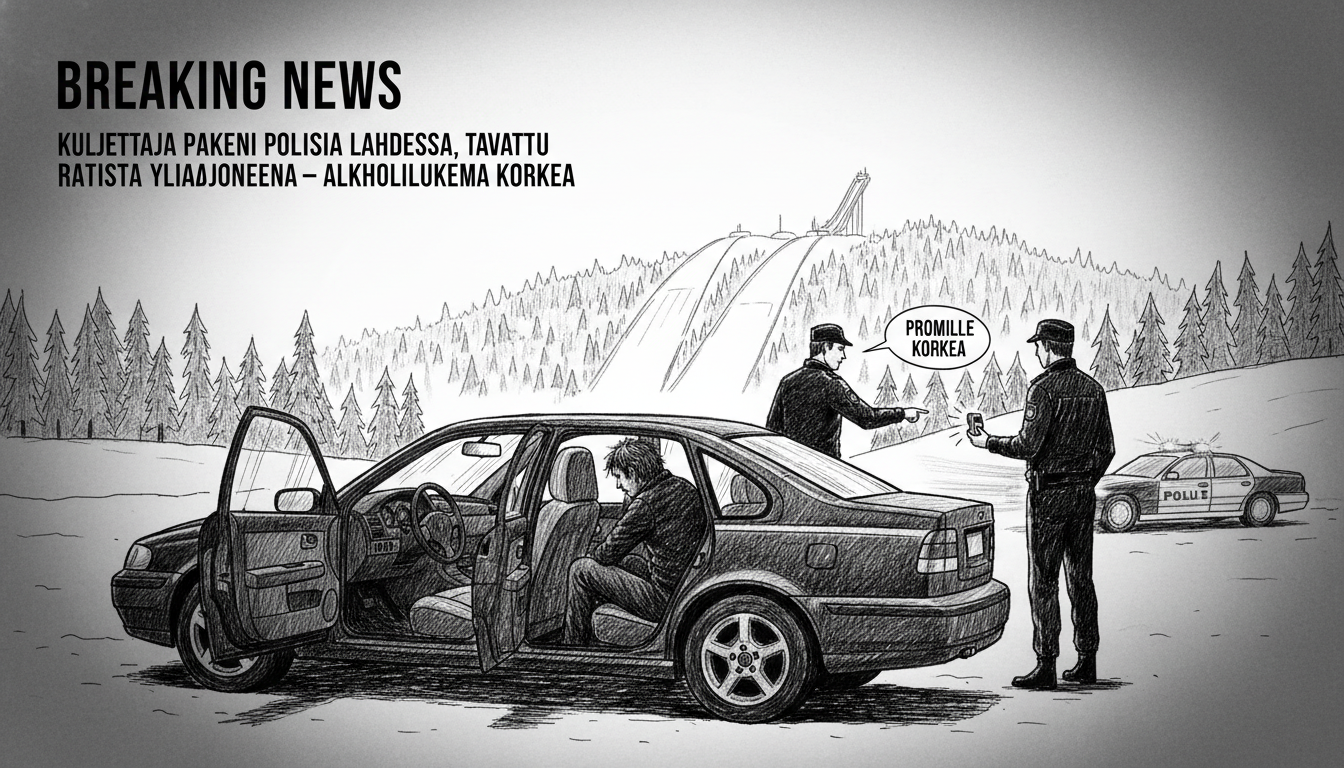Police in Lahti stopped a speeding car during early Sunday morning hours. Officers discovered an unusual scene when they approached the vehicle. The driver's seat was completely empty.
A young man in the back seat claimed an unknown person had been driving. He said this mystery driver fled the scene when police appeared. The backseat passenger appeared very talkative and in high spirits. He identified himself as the car's owner. Another passenger sat in the front passenger seat.
Police remained skeptical of this story. Officers had clocked the vehicle traveling 80 km/h on Lahti Street, which has a 50 km/h speed limit. The police patrol had maintained visual contact with the car throughout the pursuit. They followed it to a Prisma supermarket parking lot for the stop.
The fleeing driver narrative did not match what officers observed. After further questioning, the backseat passenger admitted he had been driving all along. The front seat passenger confirmed this version of events.
Police administered a breathalyzer test to the talkative passenger. The device showed a reading of 0.72 mg/l. Finland's legal limit for drunk driving is 0.22 milligrams of alcohol per liter of exhaled air. This reading represented more than three times the legal limit. Officers took the man for additional blood testing to confirm the results.
This incident highlights Finland's strict approach to traffic enforcement. The country maintains some of Europe's toughest drunk driving laws. Finnish police regularly conduct roadside checks, especially during weekend nights.
Drunk driving penalties in Finland escalate quickly. First offenders face heavy fines based on their income. The system calculates penalties using daily income rates. Serious cases can result in prison sentences. Drivers typically lose their licenses for several months.
The Lahti case demonstrates how alcohol impairment affects judgment. The driver's decision to initially lie about driving shows poor decision-making. His high alcohol level likely contributed to this behavior.
Finnish authorities take a zero-tolerance approach to drunk driving. The country has steadily lowered its legal limits over the years. Public awareness campaigns emphasize the dangers of impaired driving.
International visitors should note Finland's strict enforcement. Rental car companies provide clear warnings about local traffic laws. The legal blood alcohol limit is lower than in many other countries.
This incident occurred during typical high-risk hours for drunk driving. Weekend late nights see increased police patrols for this reason. The early Sunday morning timing matches patterns of alcohol-related traffic incidents.
The case will likely proceed through Finland's legal system quickly. Police typically fast-track drunk driving cases. The evidence appears strong with multiple witness statements and chemical test results.

